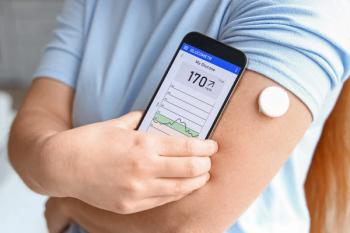
V116 Pneumococcal Vaccine Shows Noninferiority to PPSV23
V116 is noninferior to 23-valent pneumococcal polysaccharide vaccine (PPSV23) for all 12 common serotypes and superior to 9 unique serotypes.
V116, a 21-valent pneumococcal conjugate vaccine, was noninferior to the 23-valent pneumococcal polysaccharide vaccine (PPSV23) for all 12 common serotypes and superior for 9 unique serotypes based on V116/PPSV23 geometric titers. Further, investigators found that V116 was superior to PPSV23 for 8 of 9 serotypes that were unique to V116, according to results from the STRIDE-10 (
The CDC recommends pneumococcal vaccination for children younger than 5 and children aged 5 to 18 years with certain risk conditions. Further, it recommends the vaccine to all adults 50 years or older and adults aged 9 through 49 years with certain risk conditions. Adverse events are usually mild and go away within a few days, which can include redness, swelling, pain, or tenderness at the injection site; fever; loss of appetite; irritability; feeling tired; headache; and muscle aches for PCV15, PCV20, and PCV21. For PPSV23, AEs include redness or pain at the injection site, feeling tired, fever, and muscle aches.2
Investigators conducted a phase 3, randomized, double-blind study to evaluate the safety, tolerability, and immunogenicity of V116 for adults who are pneumococcal vaccine naïve and 50 years and older, and PPSV23 was used as the active comparator. Patients excluded had a history of invasive pneumococcal disease, had known hypersensitivity to any component of the vaccines, had known or suspected impairment of immunological function, and received a prior pneumococcal vaccine or expected to receive a pneumococcal vaccine during the study outside of protocol.3
The primary outcomes included the percentage of individuals with solicited injection-site adverse events (AEs) up to 5 days postvaccination, percentage of individuals with solicited systemic AEs at 5 days, percentage of participants with vaccine-related serious AEs up to 6 months, Serotype-specific opsonophagocytic (OPA) geometric mean titers (GMTs) for all V116 serotypes at day 30 postvaccination, and percentage of individuals with a 4-fold or greater rise from baseline in serotype-specific OPAs for V116 unique serotypes. Secondary outcomes included the percentage of individuals with a 4-fold or higher rise from baseline in serotype-specific cross-reactive OPAs from baseline to day 30 postvaccination, serotype-specific geometric mean fold rise of OPA GMTs for all V116 serotypes, serotype-specific immunoglobulin G (IgG) geometric mean concentrations for all V116 serotypes, serotype-specific geometric mean fold rise of IgG geometric mean concentrations for all V116 serotypes, percentage of participants with a 4-fold or greater rise from baseline in serotype-specific OPA GMTs, and percentage of individuals with a 4-fold or more rise from baseline in serotype-specific IgG geometric mean concentrations.3
Investigators conducted November 2022 to October 2023, including a total of 1480 patients. Greater than 98% of patients completed the study, with the most common reason for discontinuation being loss to follow-up. The demographics were comparable for both vaccine groups, with the majority of patients being female, White, and not of Hispanic or Latino ethnicity. Approximately 54% of patients were 65 years or older.1
Investigators noted that V116 met the predefined criterion for cross-reactive antibody response for serotype 15B, but serotype 6C did not meet the criterion. The IgG GMCs at 30 days postvaccination for both common and unique serotypes were consistent for both groups. Furthermore, the primary immunogenicity end points, including OPA GMT ratios and proportion of individuals with a 4-fold or more rise in OPA responses for the 9 unique serotypes, were generally consistent.1
The proportion of individuals with AEs was comparable at 61% for the V116 group and 56.8% in the PPSV23 group. The most frequently reported AEs were injection site pain, headache, fatigue, injection site erythema, and myalgia in both groups. The majority of events were of mild-to-moderate intensity and lasted 3 days or less in both groups. None of the AEs were life-threatening, and there were no vaccine-related serious AEs, according to the study authors.1
READ MORE:
Ready to impress your pharmacy colleagues with the latest drug information, industry trends, and patient care tips? Sign up today for our
REFERENCES
1. Jotterand V, Jagannath V, Diaz AA, et al. A Phase 3 Randomized Trial Investigating the Safety, Tolerability, and Immunogenicity of V116, an Adult-Specific Pneumococcal Vaccine, Compared with PPSV23, in Adults ≥50 Years of Age (STRIDE-10). Vaccines (Basel). 2025;13(4):341. Published 2025 Mar 22. doi:10.3390/vaccines13040341
2. CDC. Pneumococcal Vaccination. October 26, 2024. Accessed May 19, 2025. https://www.cdc.gov/pneumococcal/vaccines/index.html
3. Safety and Immunogenicity of V116 in Pneumococcal Vaccine-naïve Adults 50 Years of Age or Older (V116-010, STRIDE-10). ClinicalTrials.gov identification: NCT05569954. Updated March 4, 2025. Accessed May 19, 2025. https://clinicaltrials.gov/study/NCT05569954
Newsletter
Pharmacy practice is always changing. Stay ahead of the curve with the Drug Topics newsletter and get the latest drug information, industry trends, and patient care tips.




































































































































